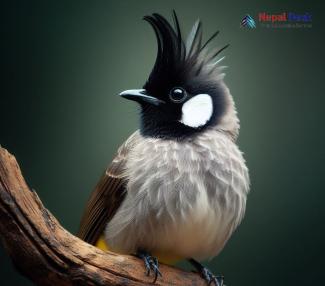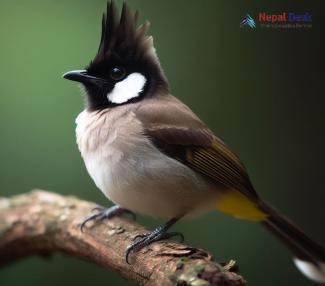The Himalayan Bulbul, or Pycnonotus leucogenys, is a captivating bird species found in the picturesque landscapes of Nepal and nearby regions. With its eye-catching appearance and exclusive presence, this fascinating bird has attracted birdwatching enthusiasts from all corners of the globe. Let's delve deeper into the world of the Himalayan Bulbul, explore its existence in Nepal, and discover some intriguing facts about this magnificent creature.
A Closer Look at the Species
A member of the Pycnonotidae family, the Himalayan Bulbul is a medium-sized bird that's easily distinguished by its unique black crest. It has a pale grayish-white body with black wings and tail feathers, along with a contrasting white head and throat – creating an impressive visual display. This particular bird dwells primarily in the Himalayan region, extending from Pakistan to Southeastern Tibet and Northern India.
Habitat in Nepal
Thanks to Nepal's diverse plant and animal life, as well as its varying altitudes, it provides an idyllic home for the Himalayan Bulbul. These birds favor temperate forests at elevations ranging from 900 to 2400 meters above sea level. They can often be spotted amongst broad-leaved woodlands and shrubs throughout Nepal's hilly terrain.
Noteworthy locations for birdwatching enthusiasts searching for this elegant flyer include Chobar Gorge, Shivapuri-Nagarjun National Park, and Godavari Botanical Gardens around Kathmandu Valley. With their beguiling voices offering a mix of sonorous tunes crafted by deep whistles and their vibrant dawn chorus, it's no wonder that bird lovers are drawn to the region.
Interesting Highlights
Social Interaction
The Himalayan Bulbul usually gathers in small flocks or pairs, and they're an energetic bunch, consistently foraging among trees and shrubs in search of food. Their diet mostly includes fruits, seeds, and tiny insects.
Mating Season
The breeding season for Pycnonotus leucogenys spans April to August. In this period, these birds construct delicate yet sturdy cup-shaped nests amidst dense foliage – using small twigs, moss, and grass. Both male and female Bulbuls share incubation duties, and after 12 days, the eggs transform into defenseless chicks that need constant attention.
Conservation Status
The International Union for Conservation of Nature (IUCN) Red List classifies the Himalayan Bulbul as "Least Concern" due to its extensive distribution and stable population.
Affable Conduct
Despite their timid demeanor, the Himalayan Bulbuls sometimes mingle with humans at popular birdwatching sites by taking food offerings straight from their hands.
In summary, the Himalayan Bulbul occupies a unique position amid Nepal's diverse bird population thanks to its enchanting features and melodious calls. With suitable conservation measures in place, we can anticipate that these delightful birds will continue to adorn the skies and enthrall bird admirers throughout this breathtaking region for generations to come.




